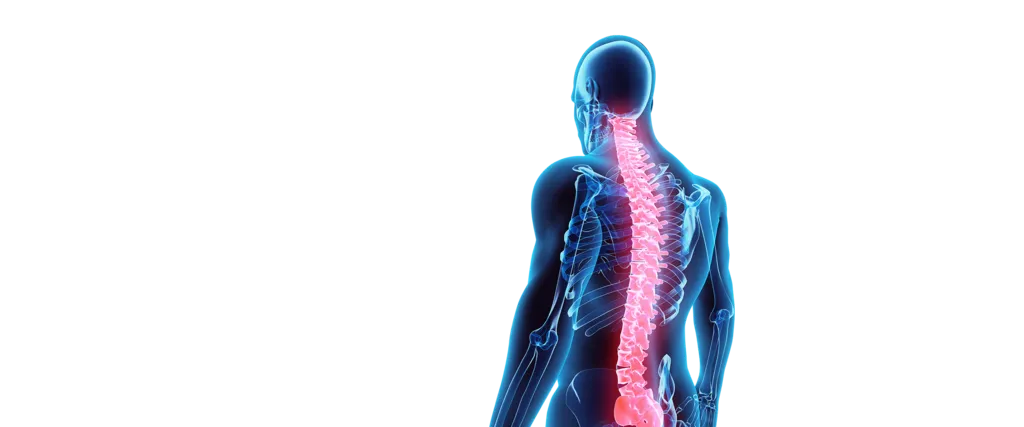GOT PAIN? Feel the Healing Power!

Whether it is knee pain, hip pain, or shoulder pain, Dr. Teixeira can resolve it by looking at it from a new perspective- finding the cause. Dr. Teixeira will radically change your idea of what a chiropractor can do for you!
Achilles tendinitis
Inflamed Achilles tendon (connects muscle to bone), the thickest tendon extending from calf to heel
Adhesive capsulitis
Pain, loss of motion, inflammation, and adhesions or scar tissue of the shoulder capsule (also known as frozen shoulder or FS)
Ankle injury
Ankle sprains, strains, tarsal tunnel, and more
Arthritis
Inflamed and degenerated joints; most common form is osteoarthritis, or “wear and tear” arthritis, from the natural aging process of the human body
Back pain or injury
Herniated or bulging disks, sprains, strains, pinched nerves, spinal misalignment, muscle imbalances, and more
Bicipital tendinitis
Inflamed bicep tendon (connects muscle to bone) that can cause shoulder pain
Bunions
Chronic foot pain from a bump on the big toe
Bursitis
Inflamed fluid sacs where muscle and tendons interact with bones, most commonly affecting elbows, knees, hips, and shoulder
Carpal tunnel syndrome
Numbness, tingling, or pain in the hand, wrist, or arm caused by a compressed joint/ nerve in the wrist
Chondromalacia
Damage to kneecap cartilage which is commonly a result of long standing muscle imbalances that results in inflammation and pain (also known as Runner’s knee)
Compartment syndrome
Compressed nerves and blood vessels within an enclosed space, leading to muscle and nerve damage and most commonly affecting the forearm or lower leg
De Quervain’s tenosynovitis
Wrist and thumb pain commonly caused by repetitive overuse; results in scar tissue formation
Depuytren’s contracture
Finger curling as a result of thickening tissue in the palm and fingers
Foot pain or injury
Caused by disease, trauma, improper foot mechanics, nerve injury, or more
Frozen shoulder
Pain, loss of motion, inflammation, and adhesions or scar tissue of the shoulder capsule (also called adhesive capsulitis)
Gait imbalance
Uneven patterns of movement while running or walking
Golfer’s elbow
Inflamed inner elbow or medial epicondylitis (similar to tennis elbow — which involves the outer elbow instead)
Golf injury
Golfer’s and tennis elbow, De Quervain’s tenosynovitis, carpal tunnel syndrome, low back pain, knee and shoulder pain, and more
Hammer toe
Second, third, or fourth toe deformity where toes are bent at the middle joint
Hand injury
Carpal tunnel syndrome, tendinitis, ligament damage, nerve compression, and more
Headache
Tension headaches, stress headaches, migraines, and more
Hip injury or pain
Arthritis, bursitis, tendinitis, and more
Iliotibial (IT) band syndrome
Thigh injury and subsequent knee pain; commonly a result of muscle imbalances associated with repetitive activities like running, cycling, and weight lifting
Impingement syndrome
Common shoulder condition where weak shoulder or rotator cuff and scapular muscles affect shoulder joint movement; causes inflamed or irritated rotator cuff tendons (impingement syndrome is a rotator cuff syndrome also known as swimmer’s shoulder or thrower’s shoulder); Femoroacetabular impingement affects the hip joint (known as FAI)
Joint dysfunction
Arthritis, bursitis, tendinitis, muscle imbalances, and other dysfunctions that alter proper joint movement
Joint hypomobility
Joint does not move enough; the most common joint dysfunction treated by a chiropractor
Join hypermobility
Joint moves too much; commonly treated with rehabilitation, or in severe cases, with prolotherapy
Knee pain or injury
Arthritis, knee ligament tears or sprains, knee cartilage (meniscus) pain, swollen or painful kneecaps resulting in scar tissue, iliotibial band syndrome, muscle weakness, and more
Leg injury
Shin splints, muscle strains and sprains, compartment syndrome, iliotibial band syndrome, runner’s knee, joint and nerve problems, and more
Lower back pain
Sciatica, spinal injury, ligament sprains, joint pain, herniated or slipped disc, and more
Muscle imbalance
Can cause shoulder pain, lower back pain, neck pain, and more
Muscle strain
Damage or tearing of the muscle and sometimes its attached tendon; commonly occurs where muscle and tendon meet (also called pulled muscle)
Muscle pain or weakness
Caused by injury, overuse, tension, or disease
Myofascitis
Inflammation of a muscle and its fascial tissue (thin tissue that covers all muscles like plastic cling wrap)
Neck pain
Muscle strain or tension, neck or spinal injury, whiplash resulting from a car accident, and more
Nerve entrapment syndromes
Syndromes with a pinched nerve or compressed nerve (carpal tunnel syndrome is one type of nerve entrapment syndrome)
Performance care
Increasing efficiency of body function and performance by eliminating muscle imbalances, muscle strength issues, faulty biomechanics, nutritional deficiencies, and more (also called performance enhancement)
Plantar fascitiis
Inflammation of the fascia (connective tissue) on the bottom of the foot, and most commonly associated with heel pain due to running or chronic tightness from the foot all the way to the hip region
Post surgical conditions
For example: neck, back, shoulder, arm, knee, hip, leg, and foot pain occurring post surgery as a result of scar tissue, weakness or long standing irritation in any muscle, tendon, ligament, or joint from a previous trauma
Pulled muscle
Damage to the muscle and sometimes its attached tendon; commonly occurs where muscle and tendon meet (also called muscle strain).
Repetitive strain injury
Carpal tunnel syndrome, De Quervain’s syndrome, tendinitis, low back pain, and any other type of repetitive stress injury
Rib pain
Caused by injury, inflammation, stress, or disease
Rotator cuff syndromes
Shoulder muscle damage caused by repetitive motion, overuse, underuse (weak rotator cuff muscles), or trauma (impingement syndrome, or swimmer’s shoulder, is one type of rotator cuff syndrome)
Running injuries
Achilles tendinitis, runner’s knee, iliotibial band syndrome, plantar fasciitis, shin splints, and more
Runner’s knee
Damage to kneecap cartilage that results in inflammation and pain (also known as chondromalacia patella)
Scar tissue
Fibrous tissue that replaces normal tissue after an injury and often results in the muscle or tendon shortening (leading to muscle weakness); over time, scar tissue can limit movement and cause pain
Sciatica
Common form of low back pain and leg pain, caused by compression of the sciatic nerve or sciatic nerve root (the longest and widest nerve in the body, extending from the lower back, through the buttock, and into the thigh and hip)
Shin splints
Painful shin condition often caused by running (also known as anterior or medial tibial stress syndrome)
Shoulder pain
Bursitis, tendonitis, rotator cuff syndromes, frozen shoulder, and more
Sports injuries
Running injury, cycling injury, golfing injury, tennis injury, swimming injury, soccer injury, basketball injury, football injury, baseball injury, and more
Swimmer’s shoulder
Weak shoulder or scapular muscles caused by inflamed or irritated rotator cuff tendons (swimmer’s shoulder is a rotator cuff syndrome and is similar to what occurs in baseball with thrower’s shoulder)
Tendinitis
Inflammation of the tendons (connects muscle to bone), common types being Achilles tendinitis or tennis elbow
Tennis elbow
Inflammation of the elbow tendons brought on by repetitive motions of the wrist or forearm; causes worsening outer elbow pain and a weak grasp (similar to golfer’s elbow — which involves the inner elbow instead)
Thoracic outlet syndrome
A combination of shoulder pain, neck pain, numb or tingling fingers, and a weak grasp; commonly caused by poor posture resulting in tight pectoral or neck muscles
TMJ
Jaw pain caused by altered joint biomechanics and muscle tension

